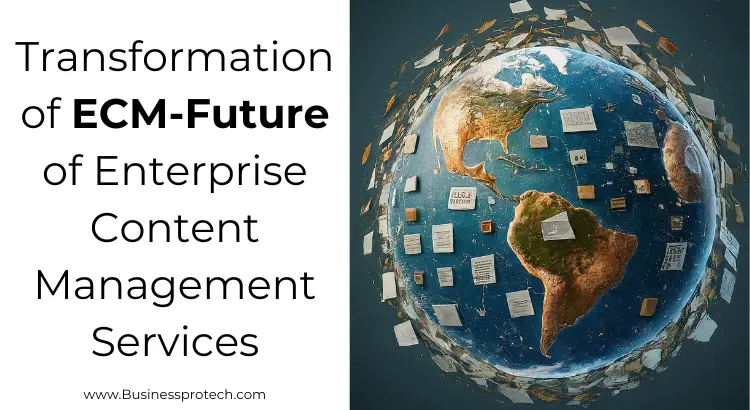The “Transformation of ECM-Future Services” refers to the evolution of Enterprise Content Management (ECM) into a more comprehensive and service-oriented approach to managing information.

This transformation is driven by several key factors:
Shifting focus from storage to usage: Traditionally, ECM focused on securely storing and accessing documents. The future lies in using content actively, extracting insights, and integrating it seamlessly into workflows. This involves:
- Content Services Platform (CSP) adoption: Gartner and other analysts advocate for CSPs, offering broader functionality than traditional ECM like capture, collaboration, AI-powered processing, and integration with other systems.
- Information Management focus: AIIM proposes “Intelligent Information Management,” where data and content are managed together for strategic decision-making.
Cloud adoption and platform consolidation: Businesses are moving ECM systems to the cloud for scalability, agility, and cost-effectiveness. This enables consolidation of content across silos and departments.
Increased user expectations: Users demand intuitive interfaces, familiar user experiences (like within existing work applications), and access to content on any device.
Integration and automation: Content needs to seamlessly integrate with various business applications and automate workflows for efficiency and accuracy.
Here are some potential future services envisioned in the transformed ECM landscape:
- Cognitive services: AI-powered features like data extraction, automatic categorization, sentiment analysis, and content-based recommendations.
- Process automation: Robotic Process Automation (RPA) can handle repetitive tasks like document classification, data entry, and approvals.
- Advanced security and compliance: Secure access controls, audit trails, and data loss prevention for sensitive information.
- Personalization and collaboration: Tailored content experiences and enhanced collaboration tools for efficient teamwork.
The exact features and services will vary depending on individual organizational needs, but the overall trend is towards a more dynamic, user-centric, and AI-powered approach to managing information.